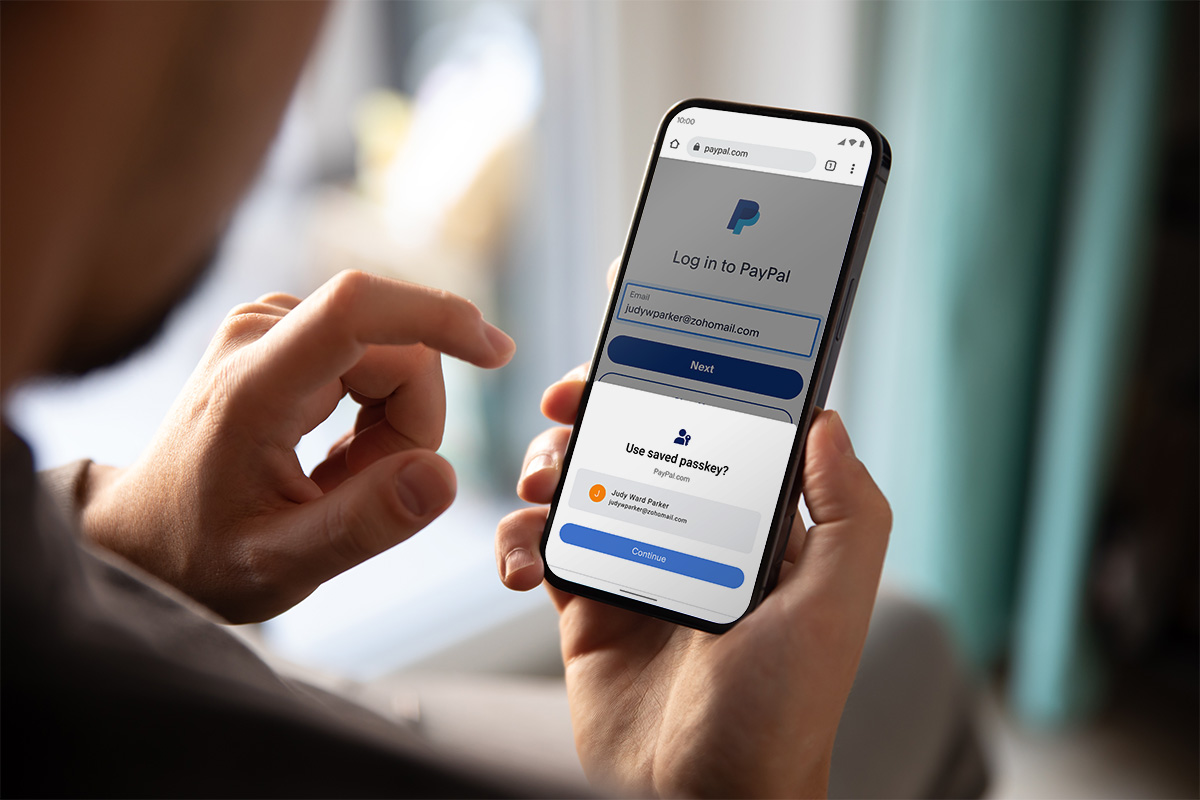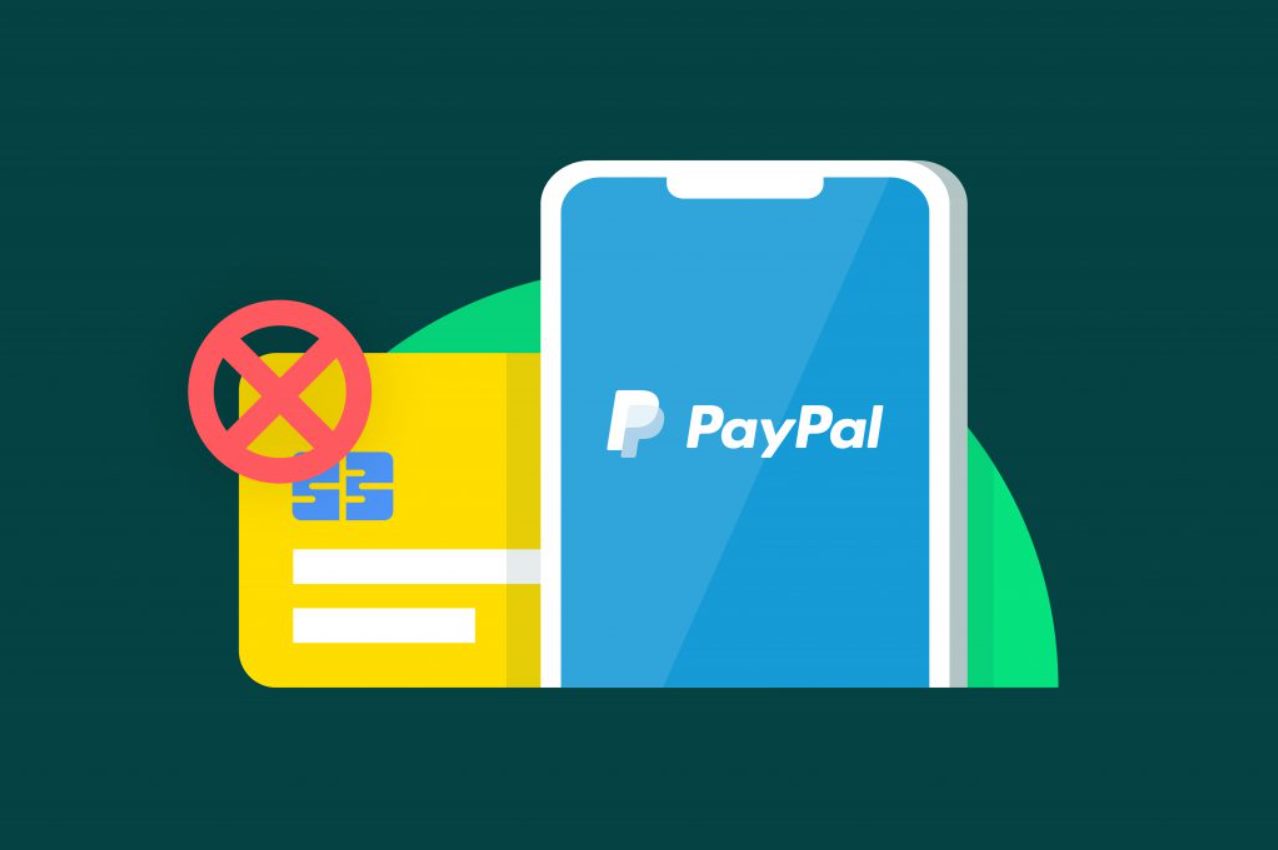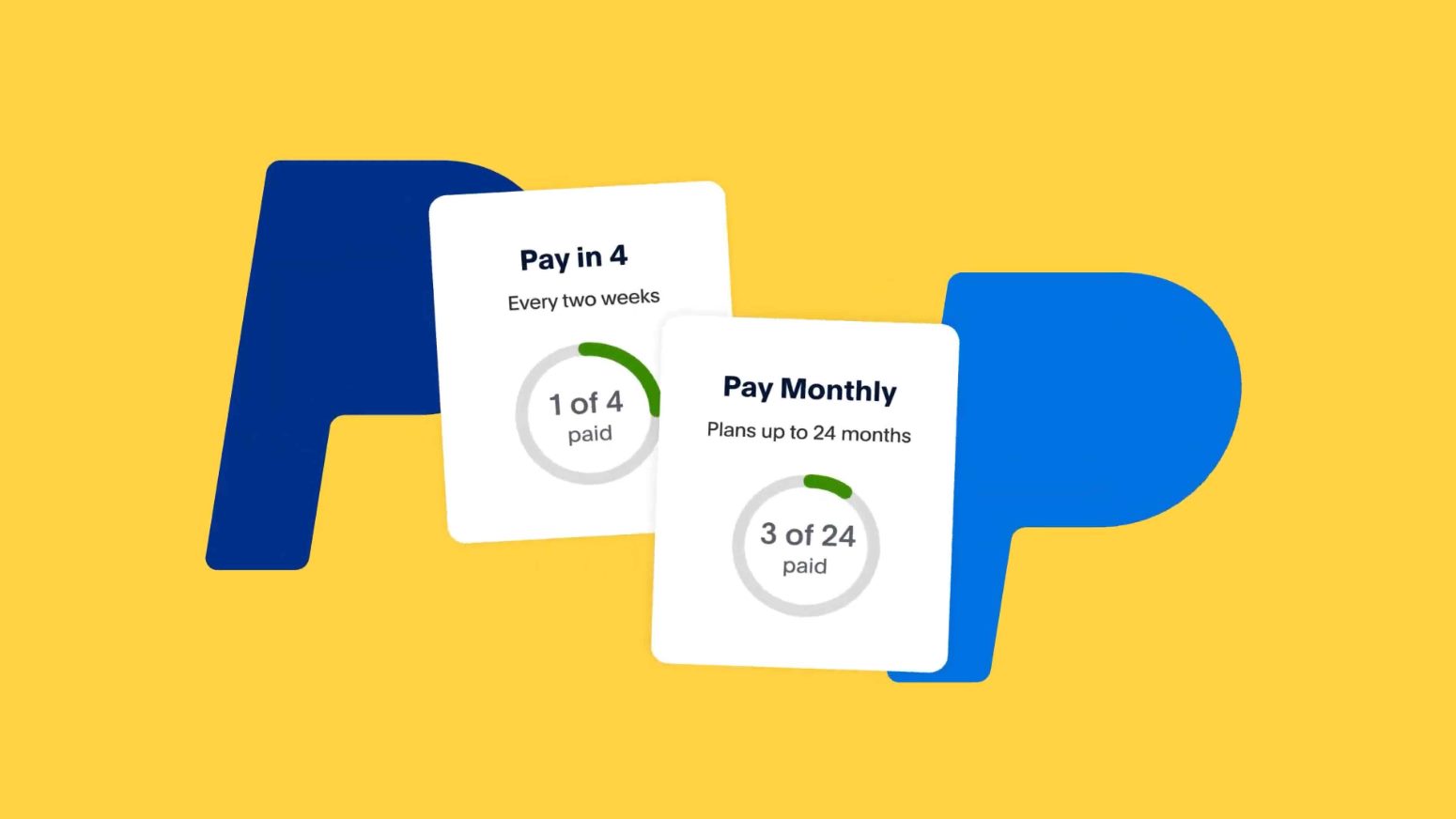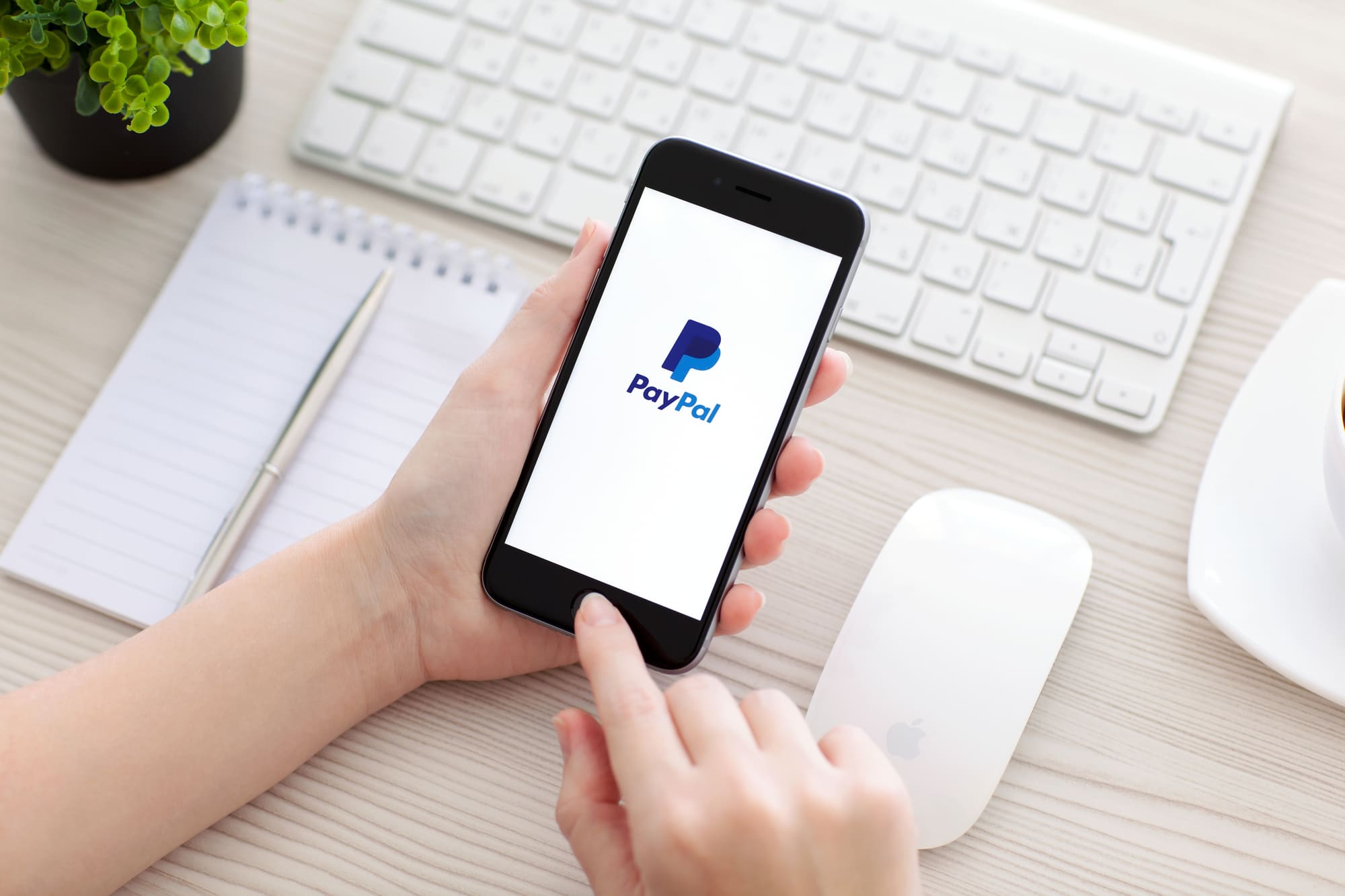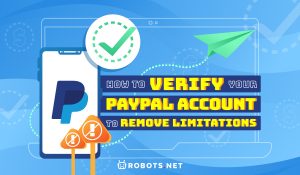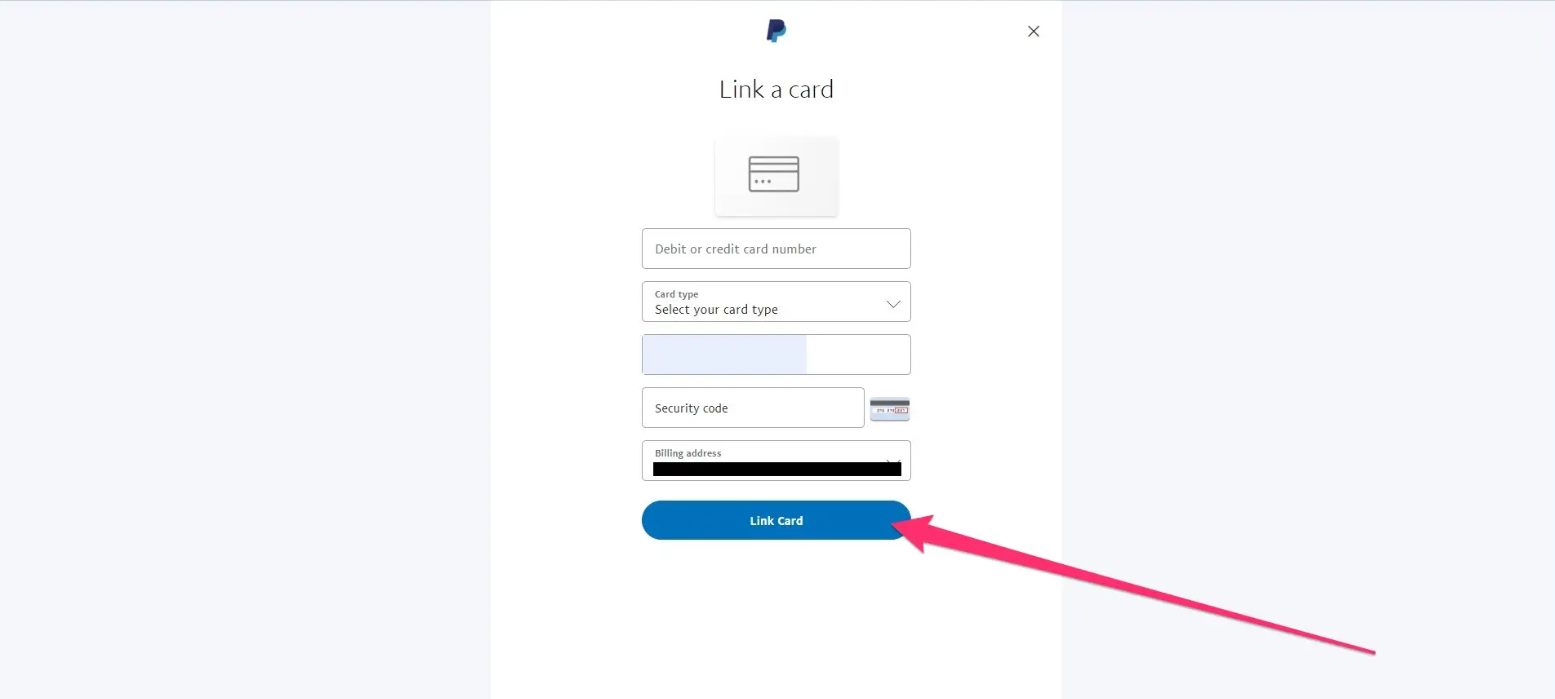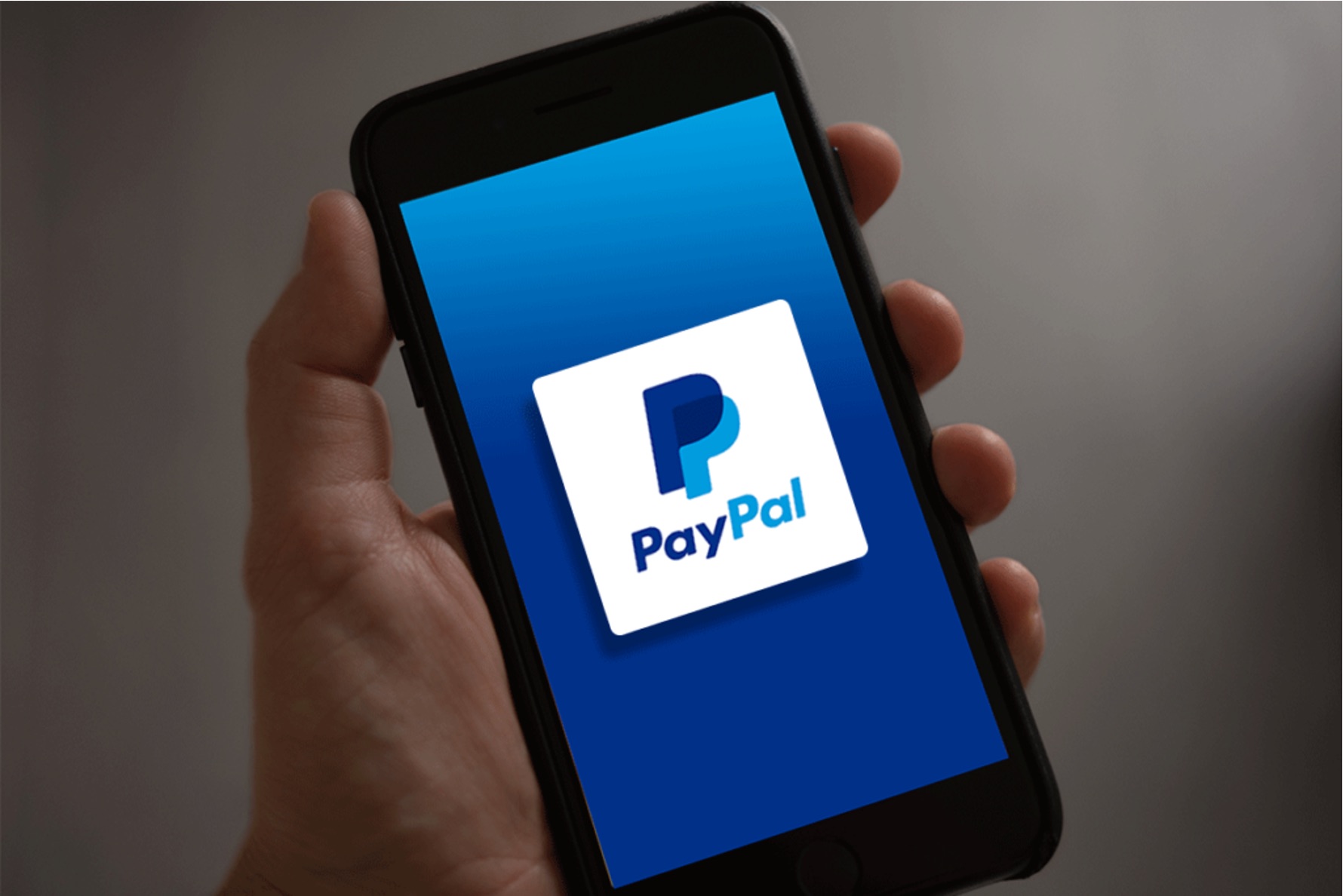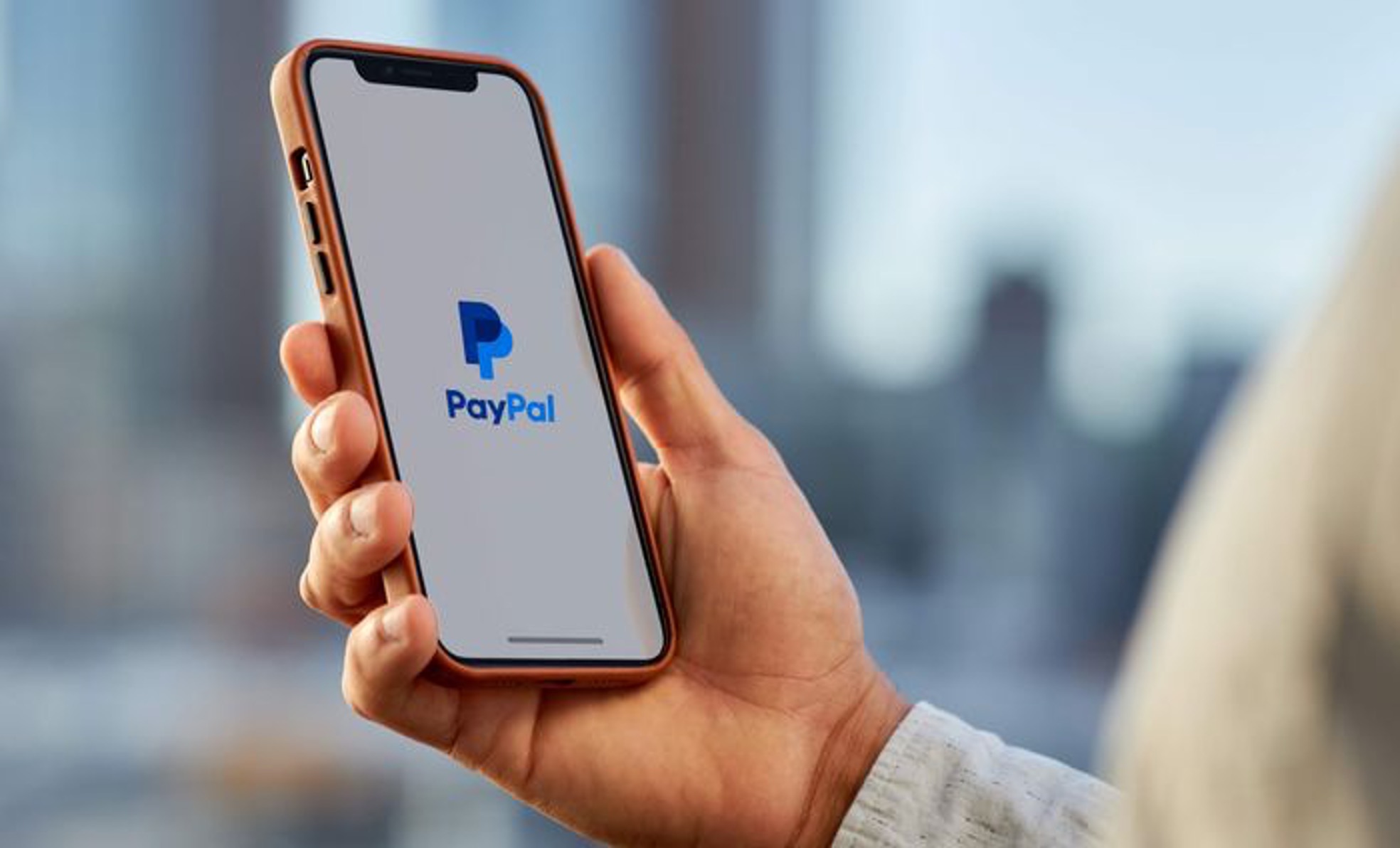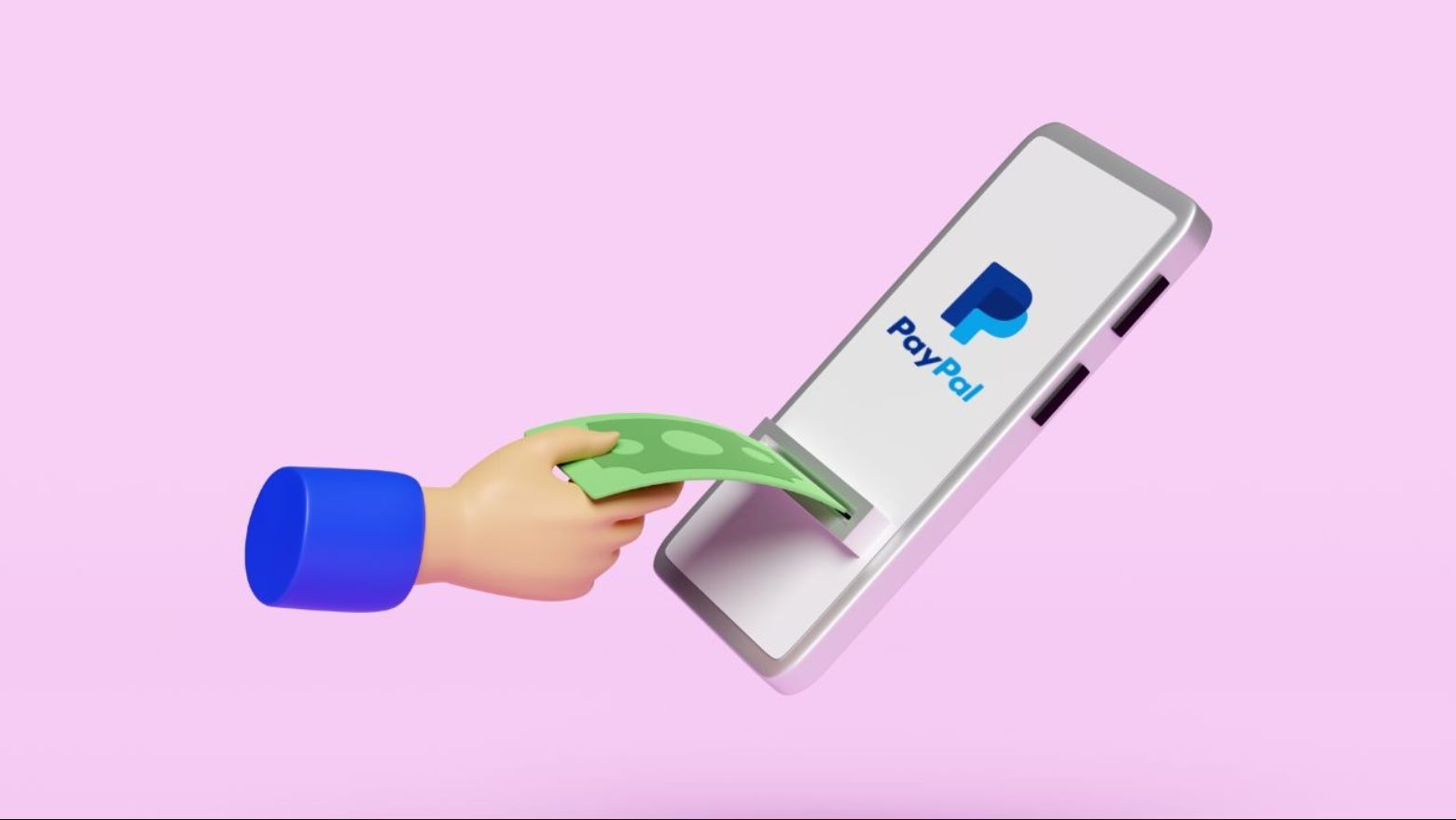Introduction
Welcome to the world of online payments and transactions! PayPal has become one of the most popular and trusted platforms for sending and receiving money across the globe. It offers a secure and convenient way to handle financial transactions, whether you are shopping online, running an e-commerce business, or sending money to family and friends.
However, at times, you may encounter a situation where your PayPal account becomes limited. This can be a frustrating experience, as it temporarily restricts your ability to use certain features and access funds in your account. But don’t worry, in this article, we will explore why PayPal accounts get limited and what you can do to resolve the issue.
A limited PayPal account means that there are certain restrictions placed on it by PayPal. These restrictions can vary in nature and severity, depending on the reason for the limitation. Your account may be limited for various reasons, such as security concerns, suspicious activity, violation of PayPal’s policies, or the need for additional verification.
It is important to understand that PayPal imposes these limitations to protect both the users of their platform and their own financial system. By implementing these measures, PayPal aims to prevent fraud, money laundering, and unauthorized access to accounts, ensuring a safe environment for everyone involved.
Having your PayPal account limited can be a frustrating experience, but the good news is that most of the limitations can be resolved. PayPal provides a process to verify and restore your account, allowing you to regain full functionality and access to your funds. Understanding the common reasons for account limitations and taking the necessary steps can help you navigate through this situation more effectively.
In the following sections, we will delve into the common reasons for PayPal account limitations and provide you with guidance on restoring your account and preventing future limitations. So, let’s get started!
What does it mean to have a limited PayPal account?
If you have received an email notification or logged into your PayPal account and noticed that your account has been limited, it means that there are certain restrictions placed on your account by PayPal. These restrictions may impact your ability to send or receive money, make purchases, withdraw funds, or perform other transactions.
A limited PayPal account is a security measure implemented by PayPal to protect both their users and the integrity of their platform. When your account is limited, it indicates that PayPal has detected some potentially suspicious or unusual activity associated with your account. It could be due to a variety of factors, such as a large or sudden influx of funds, a change in account information, or transactions that seem out of the ordinary.
While having a limited PayPal account can be an inconvenience, it is important to remember that it is a temporary measure taken by PayPal to investigate and address any potential security issues. PayPal’s primary goal is to ensure that your account and funds are secure, and they have procedures in place to guide you through the process of restoring your account.
When your PayPal account is limited, you will typically receive an email notification with instructions on how to resolve the limitation. It is crucial to follow these instructions and provide any necessary information or documentation requested by PayPal. Failure to do so may result in an extended limitation or even account closure.
During the limitation period, you may still be able to access some features of your account, but with certain restrictions in place. For example, you may still be able to log in, view your account balance, or receive payments, but you may not be able to withdraw funds or make new payments. These restrictions are temporary and will be lifted once your account is fully restored.
Remember that having a limited PayPal account does not necessarily indicate any wrongdoing on your part. It is simply a precautionary measure taken by PayPal to ensure the security of your account and funds. By cooperating with PayPal and providing the requested information, you can expedite the restoration process and regain full access to your account.
Common reasons for PayPal account limitations
PayPal account limitations can occur for a variety of reasons. Understanding these common reasons can help you proactively prevent limitations and be prepared to address them if they do occur. Here are some of the most frequent reasons for PayPal account limitations:
- Suspicious or unusual activity: PayPal closely monitors accounts for any suspicious or irregular activity. This can include a sudden increase in sales or purchases, transactions from unrecognized sources, or multiple failed login attempts. If PayPal detects any of these activities, they may limit your account temporarily while they investigate.
- Violation of PayPal’s policies: PayPal has strict policies in place to ensure the safety and integrity of their platform. If you engage in activities that violate these policies, such as selling prohibited items, engaging in illegal activities, or conducting transactions that breach their terms of service, your account may be limited.
- Lack of account verification: PayPal requires users to verify their accounts to ensure their identity and protect against fraud. If you have not completed the necessary verification steps, such as confirming your email address, linking a bank account or credit card, or providing additional identification documents, your account may be limited until these requirements are met.
- Disputes or claims: If you have unresolved disputes or claims filed against you by buyers or sellers, PayPal may limit your account until the issue is resolved. This is done to protect all parties involved and to prevent further financial harm.
- Excessive chargebacks or refunds: Too many chargebacks or refund requests can raise red flags for PayPal. Excessive chargebacks indicate a higher risk of fraudulent activities or customer dissatisfaction. If your account shows a pattern of excessive chargebacks or refunds, PayPal may limit your account to prevent further financial losses.
It is important to note that these reasons are not exhaustive, and other factors can contribute to PayPal account limitations. The specific reason for your account limitation will be communicated to you by PayPal through email or within your account dashboard.
If you find that your account is limited, it is essential to take prompt action to address the issue. Understanding the reason behind the limitation will help you provide the necessary information or resolve any potential concerns, allowing you to restore your account as quickly as possible.
Verifying your PayPal account
Verifying your PayPal account is an essential step to ensure its security and reliability. By completing the verification process, you not only improve the trustworthiness of your account but also gain access to additional features and higher transaction limits. Here’s what you need to know about verifying your PayPal account:
Email verification: The first step in verifying your PayPal account is confirming your email address. PayPal will send a verification email to the address you provided during the registration process. Simply click on the verification link in the email to validate your email address. This step is crucial as it establishes communication between you and PayPal.
Linking a bank account or credit card: To further authenticate your PayPal account, you can link a bank account or credit card. This step not only verifies your identity but also enables you to withdraw funds from your PayPal account to your bank account or make payments directly using your linked credit card. PayPal will guide you through the process of adding and confirming your bank account or credit card information.
Confirming your identity: In some cases, PayPal may require additional verification of your identity. This can be done by providing specific identification documents, such as a copy of your passport, driver’s license, or other government-issued identification. PayPal utilizes this information to ensure that you are the rightful owner of the account and to prevent fraudulent activities.
Once you have completed the verification steps, PayPal will update your account status to “verified.” Having a verified account offers several advantages, such as increased transaction limits, reduced account restrictions, and enhanced credibility. It also adds an extra layer of security to your account, protecting you and other PayPal users from potential risks.
It is important to note that the verification process may vary depending on your country of residence and regional regulations. PayPal will provide specific instructions and requirements based on your location. It is essential to follow these instructions carefully and provide accurate information to avoid any delays or account limitations.
Regularly reviewing and updating your account information is also a crucial aspect of maintaining a verified PayPal account. Ensure that your email address, phone number, and other contact details are up-to-date. This will enable PayPal to notify you promptly about any account-related issues or updates.
By verifying your PayPal account, you not only gain access to a wider range of features but also establish trust and reliability in online transactions. Take the time to complete the verification process, and you’ll enjoy a safer and more seamless PayPal experience.
Providing necessary information for account restoration
If your PayPal account has been limited, it is crucial to provide the necessary information requested by PayPal to initiate the account restoration process. By promptly and accurately providing the required information, you can expedite the resolution of your account limitation. Here’s what you should do:
Follow PayPal’s instructions: When your account is limited, PayPal will send you an email notification outlining the specific steps and information required to restore your account. It is essential to carefully read and follow these instructions. They will guide you through the process and provide details on what information or documentation you need to provide.
Provide accurate personal information: PayPal may request additional personal information or identification documents to verify your identity and ensure the security of your account. It is important to provide accurate and up-to-date information. Any discrepancies or inaccuracies may lead to delays in the account restoration process.
Verify your contact information: Ensure that your contact information, such as your email address and phone number, is correct and up-to-date. This will allow PayPal to communicate with you effectively and provide updates regarding your account limitation and restoration process.
Respond promptly: Timeliness is key when it comes to providing the necessary information for account restoration. PayPal typically sets a specific timeframe within which the required information must be submitted. It is important to respond promptly and meet the deadline to prevent further delays or complications with your account restoration.
Keep records of communication: Throughout the account restoration process, it is advisable to keep a record of all communication with PayPal. This includes emails, support tickets, or any other form of correspondence. Having a documented record can be helpful in case there are any misunderstandings or disputes during the account restoration process.
Remember, the information requested by PayPal is for security and verification purposes. The company takes privacy and data protection seriously, so you can feel confident in providing the necessary information to restore your account.
If you are unsure about any aspect of the information being requested or have concerns regarding the process, you can reach out to PayPal customer support. They will be able to assist you, clarify any queries, and guide you through the account restoration process.
By promptly providing the necessary information requested by PayPal, you increase your chances of having your account limitation resolved quickly. Cooperation and accuracy are key in restoring your account and regaining full access to your PayPal funds and features.
Understanding PayPal’s security measures
PayPal prioritizes the security of its users and employs a range of measures to safeguard accounts and transactions. Understanding these security measures can help you navigate the PayPal platform with confidence. Here are some key aspects of PayPal’s security measures:
Encryption and data protection: PayPal uses industry-standard encryption protocols to protect user data. This ensures that sensitive information, such as your financial details, is transmitted securely over the internet. PayPal’s advanced encryption technology helps to prevent unauthorized access to your account and provides a secure environment for your transactions.
Two-factor authentication: PayPal offers two-factor authentication as an added layer of security. With this feature enabled, you will need to provide a unique verification code in addition to your password when logging into your account. This helps prevent unauthorized access, even if your password is compromised.
Fraud detection and prevention: PayPal employs sophisticated algorithms and advanced fraud detection systems to identify and mitigate fraudulent activities. These systems analyze various factors, such as transaction patterns, location data, and account behavior, to detect suspicious or unusual activity. If any potentially fraudulent transactions or activities are detected, PayPal may take measures to protect your account, including temporarily limiting account functionality.
Secure transaction monitoring: PayPal monitors transactions in real-time to identify and block any potentially fraudulent payments or suspicious activities. In some cases, PayPal may place a temporary hold on certain transactions for manual review to ensure their legitimacy. This proactive approach helps to protect both buyers and sellers from fraudulent transactions.
Phishing protection: PayPal takes extra precautions to protect its users from phishing attempts, which are fraudulent attempts to obtain personal or financial information. PayPal utilizes email authentication protocols and education campaigns to help users identify and avoid malicious phishing emails or websites. It is important to be vigilant and only provide information through the official PayPal website or app.
By implementing these security measures, PayPal aims to provide a secure and trustworthy platform for financial transactions. However, it is also important for users to take their own security precautions. This includes using strong and unique passwords, regularly updating software and antivirus programs, and being cautious of suspicious emails or links.
In the event that your PayPal account becomes limited due to security concerns, it is crucial to cooperate with PayPal’s security measures and provide any requested information promptly. These measures are in place to protect your account and funds and ensure a safe environment for transactions.
Remember, PayPal will never ask you to provide sensitive information, such as your password or full credit card number, via email or other unsecured channels. If you receive any suspicious communication or suspect fraudulent activity, promptly report it to PayPal’s customer support to protect yourself and other users.
How long does a PayPal account limitation last?
When your PayPal account becomes limited, the duration of the limitation can vary depending on the specific circumstances surrounding the account restriction. PayPal aims to resolve limitations as quickly as possible while conducting a thorough investigation to ensure the security of your account and funds. Here are some factors that can influence the duration of a PayPal account limitation:
Reason for the limitation: The reason behind the account limitation can significantly impact its duration. For instance, if the limitation is due to a simple verification process or a minor security concern, it may be resolved within a few days. On the other hand, if the limitation involves a more complex investigation or requires extensive document verification, it may take longer to lift the limitation.
Cooperation and response time: Your cooperation and promptness in providing the necessary information or documentation requested by PayPal can impact the duration of the limitation. If you respond quickly and accurately provide the requested information, it helps expedite the review and resolution process. Delayed or incomplete responses may result in extended limitations as PayPal requires all necessary details to properly evaluate and restore the account.
Backlog and workload: The time it takes to resolve a PayPal limitation can also depend on the workload and backlog of PayPal’s customer support and security teams. If they are experiencing a high volume of cases or are dealing with complex issues, it may take longer to address each account limitation. In such cases, patience is essential as PayPal works diligently to investigate and resolve the limitations.
Account history and activity: PayPal may consider your account history and activity when determining the duration of an account limitation. If you have a well-established and verified account with a history of secure transactions, the limitation may be lifted more quickly. However, if there are patterns of suspicious activity or previous account violations, the limitation may persist for a longer period of time.
It is important to note that while PayPal strives to resolve limitations promptly, there is no fixed timeframe for account restoration. Each case is unique and should be handled individually to ensure proper evaluation and resolution.
If your PayPal account limitation lasts longer than expected, or if you encounter any difficulties during the process, it is advisable to contact PayPal customer support. They can provide updates on the progress of your case and assist you in resolving any issues you may be facing.
Remember to remain patient and cooperative throughout the account limitation process. By working closely with PayPal and providing the necessary information, you increase the chances of having your account limitation lifted as soon as possible.
Steps to resolve a limited PayPal account issue
Encountering a limited PayPal account can be a frustrating experience, but there are steps you can take to resolve the issue and regain access to your account. Follow these steps to address a limited PayPal account:
Step 1: Read the notification: When you receive a notification about your limited PayPal account, carefully read the email or message sent by PayPal. It will provide specific information about the limitation and instructions on what to do next.
Step 2: Understand the reason: Take the time to understand the reason behind the account limitation. PayPal may specify the exact cause, such as suspicious activity, policy violations, or the need for additional verification. Understanding the reason will help you provide the necessary information to resolve the limitation.
Step 3: Provide requested information: PayPal will typically request specific information or documentation to verify your identity or address the security concern. Follow the instructions provided and promptly provide the requested information. This may include submitting identification documents, confirming financial details, or providing transaction records.
Step 4: Cooperate with PayPal: It is crucial to cooperate fully with PayPal throughout the resolution process. Respond to any queries promptly and provide accurate information. Cooperation will expedite the review and restoration of your account.
Step 5: Review and update security measures: While resolving the account limitation, it is a good opportunity to review and enhance your account security measures. Enable two-factor authentication, update your password to a strong and unique one, and regularly review your account activity for any potential unauthorized transactions.
Step 6: Follow up if necessary: If your account limitation persists longer than expected or if you encounter any issues during the process, reach out to PayPal customer support for assistance. They can provide updates on your case and offer guidance on resolving any outstanding concerns.
Step 7: Await resolution: After providing the necessary information, await PayPal’s review and resolution of your account limitation. The duration of the resolution process may vary depending on the specific circumstances of your case. Be patient and allow PayPal to conduct a thorough evaluation.
Step 8: Account restoration: Once PayPal has completed their review and is satisfied with the provided information, your account limitation will be lifted. You will regain full access to your account and its features, including the ability to send and receive money.
Remember to ensure your account information is accurate and up-to-date to prevent future limitations. Regularly review and update your contact information, including email addresses and phone numbers, so that PayPal can reach you for any account-related communications.
By following these steps and cooperating with PayPal, you increase the chances of resolving your limited PayPal account issue efficiently and restoring full access to your account and funds.
Contacting PayPal customer support for assistance
When facing issues with a limited PayPal account, reaching out to PayPal’s customer support can provide you with the assistance and guidance necessary to resolve the problem. Here’s how you can contact PayPal customer support for help:
1. Visit the PayPal Help Center: PayPal’s Help Center is a valuable resource for finding answers to commonly asked questions and accessing self-help guides. Start by visiting the PayPal website and navigating to the Help Center section.
2. Search the Knowledge Base: Use the search function within the PayPal Help Center to find relevant articles and information related to your specific issue. PayPal has an extensive knowledge base that covers a wide range of topics, providing detailed explanations and step-by-step instructions.
3. Submit a support ticket: If the information provided in the Help Center does not address your concern, you can submit a support ticket. This allows you to explain your issue in detail and receive personalized assistance from a PayPal representative. Provide as much information and context as possible to help PayPal understand your situation.
4. Use PayPal’s Virtual Agent: PayPal’s Virtual Agent is an AI-powered tool that can help guide you through common issues and provide relevant solutions. You can interact with the Virtual Agent through the PayPal website or app, and it will attempt to assist you in resolving your problem through automated responses.
5. Connect through social media: PayPal has an active presence on various social media platforms. You can reach out to PayPal’s support team through their official social media accounts. Direct messaging or commenting on their posts can initiate a conversation and allow you to seek assistance.
6. Contact customer support directly: If you prefer to speak with a customer support representative directly, PayPal provides contact information on their website. You can find the appropriate phone number or email address to reach out for assistance. Be prepared to provide your account details and explain the issue clearly to receive tailored support.
7. Be patient and follow up: After contacting PayPal customer support, it is important to be patient and allow them time to address your concern. If necessary, follow up on your inquiry by providing any additional information or documentation requested. Remember, PayPal’s customer support team is there to help you, and they will work to resolve your issue as efficiently as possible.
When contacting PayPal customer support, it is helpful to have relevant information readily available, such as your account details, transaction history, and any related communication from PayPal. This will assist the customer support representative in better understanding and resolving your concern.
By reaching out to PayPal customer support and seeking their assistance, you increase the chances of resolving your account limitations or any other issues you may be facing. Don’t hesitate to take advantage of the available support channels to receive the help you need.
How to prevent future PayPal account limitations
To avoid future PayPal account limitations and ensure a smooth and uninterrupted experience, there are several proactive measures you can take. By following these practices, you can safeguard your account and maintain compliance with PayPal’s policies. Here’s how to prevent future PayPal account limitations:
1. Understand PayPal’s policies: Familiarize yourself with PayPal’s user agreement, acceptable use policy, and other guidelines. This will help you understand what activities are allowed and what can potentially lead to account limitations. Staying informed about the rules will enable you to conduct transactions within PayPal’s guidelines.
2. Keep your contact information up to date: It is crucial to regularly review and update your contact information in your PayPal account settings. Ensure that your email address, phone number, and address are accurate so that PayPal can reach you for important notifications or account updates. This will help prevent any communication gaps that could lead to misunderstandings or missed account alerts.
3. Verify your account: Complete the verification process for your PayPal account to establish trust and enhance your account security. This includes confirming your email address, linking your bank account or credit card, and providing any required identification documents. A verified account adds an extra layer of credibility and reduces the likelihood of limitations.
4. Monitor and review your account activity: Regularly review your PayPal account activity, including transactions, payments, and account balances. Look out for any suspicious or unauthorized activities and report them to PayPal immediately. Taking proactive measures to monitor your account will help detect any anomalies and address them promptly.
5. Maintain a positive account history: Adhere to PayPal’s policies and guidelines to maintain a positive account history. Engage in legitimate transactions, provide accurate product descriptions, and promptly address any customer disputes or inquiries. By maintaining a positive track record, you demonstrate your commitment to a trustworthy and reliable PayPal account.
6. Respond to customer inquiries and disputes: Promptly respond to customer inquiries, disputes, or claims to ensure a smooth resolution process. Engaging in open and transparent communication with your buyers can prevent misunderstandings and help resolve issues before they escalate. Timely resolution of customer concerns can reduce the likelihood of escalated disputes and potential account limitations.
7. Be cautious with high-risk transactions: Exercise caution when engaging in high-risk transactions, such as high-value purchases or sales, international transactions, or transactions with unknown or unestablished buyers or sellers. Take additional steps to verify the legitimacy of the transaction and the counterparty involved to mitigate any potential risks.
8. Regularly update your security measures: Maintain strong security measures for your PayPal account. Use unique and secure passwords, enable two-factor authentication, and regularly update your antivirus software and web browsers. These practices help protect your account from unauthorized access and minimize the risk of fraudulent activities.
9. Stay informed about scams and phishing attempts: Be vigilant about scams and phishing attempts that target PayPal users. Be cautious of emails or messages asking for personal or financial information. PayPal will never ask for sensitive information via email or unsolicited messages. Stay informed about common scams and regularly check PayPal’s official website for security alerts and updates.
By following these preventive measures, you can significantly reduce the chances of encountering account limitations and enjoy a secure and hassle-free PayPal experience. Stay proactive, maintain compliance with PayPal’s policies, and regularly review and update your account information and security settings.
Conclusion
Dealing with a limited PayPal account can be frustrating, but with the right knowledge and proactive approach, you can resolve the issue and prevent future limitations. Understanding the reasons for account limitations, verifying your account, providing necessary information, and cooperating with PayPal’s security measures are crucial steps in resolving a limited PayPal account.
During the resolution process, it is important to stay patient and follow the instructions provided by PayPal. Keep in mind that PayPal’s primary goal is to ensure the security and integrity of its platform, which is in the best interest of both its users and the company. By cooperating and providing accurate information, you can help expedite the account restoration process.
To prevent future account limitations, it is essential to maintain compliance with PayPal’s policies, keep your account information up to date, and proactively monitor your account activity. Regularly reviewing and updating your security measures, such as enabling two-factor authentication and using strong passwords, adds an extra layer of protection to your PayPal account.
Remember to be cautious of scams and phishing attempts, and report any suspicious activity to PayPal. Staying informed about PayPal’s security measures, policies, and guidelines will help you navigate the platform confidently and minimize the risk of account limitations.
If you encounter any difficulties or have questions, don’t hesitate to reach out to PayPal customer support. They are there to assist you and provide guidance throughout the account limitation resolution process.
By following the steps outlined in this article, you can take control of your PayPal account, resolve limitations effectively, and enjoy the convenience and security of online transactions through PayPal.







